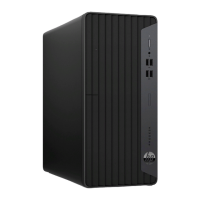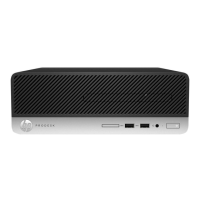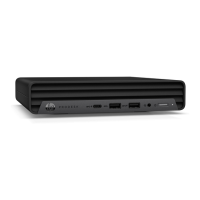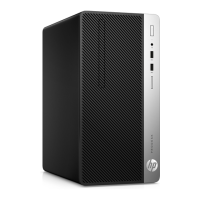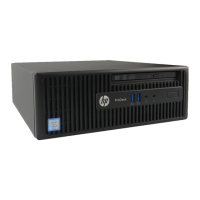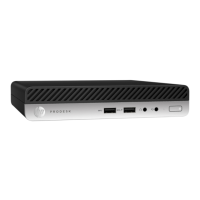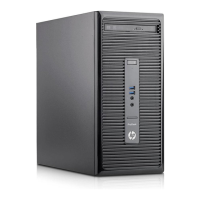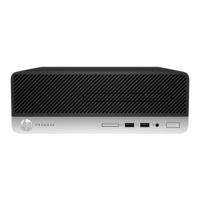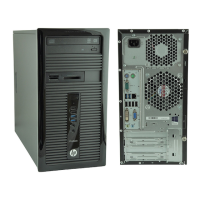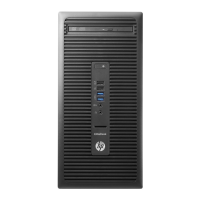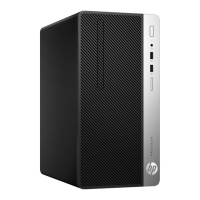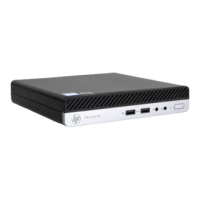Electrostatic discharge information
A sudden discharge of static electricity from your nger or other conductor can destroy static-sensitive devices
or microcircuitry. Often the spark is neither felt nor heard, but damage occurs.
An electronic device exposed to electrostatic discharge (ESD) might not appear to be aected at all and can work
perfectly throughout a normal cycle. The device might function normally for a while, but it has been degraded in
the internal layers, reducing its life expectancy.
Networks built into many integrated circuits provide some protection, but in many cases, the discharge contains
enough power to alter device parameters or melt silicon junctions.
IMPORTANT: To prevent damage to the device when you are removing or installing internal components,
observe these precautions:
Keep components in their electrostatic-safe containers until you are ready to install them.
Before touching an electronic component, discharge static electricity by using the guidelines described in this
section.
Avoid touching pins, leads, and circuitry. Handle electronic components as little as possible.
If you remove a component, place it in an electrostatic-safe container.
Generating static electricity
This table shows how humidity aects the electrostatic voltage levels generated by dierent activities. A product
can be degraded by 700 V.
● Dierent activities generate dierent amounts of static electricity.
● Static electricity increases as humidity decreases.
Table
3-1 Static electricity occurrence based on activity and humidity
Relative humidity
Event 55% 40% 10%
Walking across carpet
Walking across vinyl oor
Motions of bench worker
Removing DIPs (dual in-line packages) from plastic tube
7,500 V
3,000 V
400 V
400 V
15,000 V
5,000 V
800 V
700 V
35,000 V
12,000 V
6,000 V
2,000 V
Removing DIPs from vinyl tray
Removing DIPs from polystyrene foam
Removing bubble pack from PCB (printed circuit board)
Packing PCBs in foam-lined box
2,000 V
3,500 V
7,000 V
5,000 V
4,000 V
5,000 V
20,000 V
11,000 V
11,500 V
14,500 V
26,500 V
21,000 V
Multiple electric components can be packaged together in plastic tubes, trays, or polystyrene foam.
12 Chapter 3 Routine care, SATA drive guidelines, and disassembly preparation ENWW
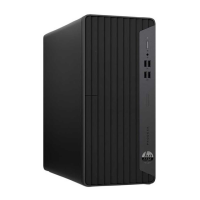
